Here at ‘Chanoma’ (Space for Tea) in Fuji city, Shizuoka one may experience the mysterious atmosphere of a Japanese tea garden【Fuji city,Shizuoka Prefecture】
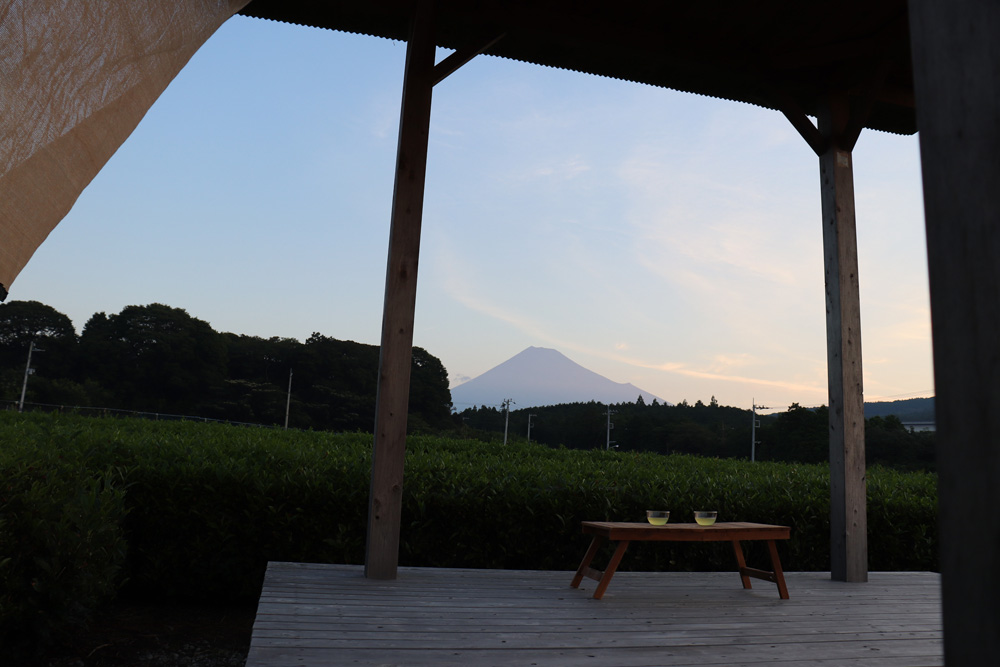
In Shizuoka Prefecture, which is famous for its tea, there is a service that rents out terraces surrounded by tea fields called “Chanoma”.’Chanoma’ are rental pagoda spaces surrounded by tea fields in the mountains of various cities in Shizuoka prefecture. There are currently 7 of these ‘tea spaces’, the one of which I will be talking about in this article is blessed with views of Mt. Fuji, Mt. Ashitaka and Suruga bay. ‘Umi(Ocean) to Fuji(Mt Fuji) no Chanoma(This means ‘Tea Garden with the Ocean and Mt. Fuji View’)’. Here to welcome me is the owner of ‘Umi to Fuji no Chanoma’ and the fifth generation director of Fuji Marumo Tea Farm, Mr. Mohei Honda.
In this interview, I will attempt to express the charm of ‘Umi to Fuji no Chanoma’ along with the tea making philosophy of Shizuoka 100 Fine Tea Association’s chairman Mohei Honda.
Contents
About ‘Umi to Fuji no Cha no ma’
A comforting breeze blows through the expansive tea fields that fill the foreground of the view from Umi to Fuji no Chanoma, onlooking Mt. Fuji to the north, and Suruga bay to the south.
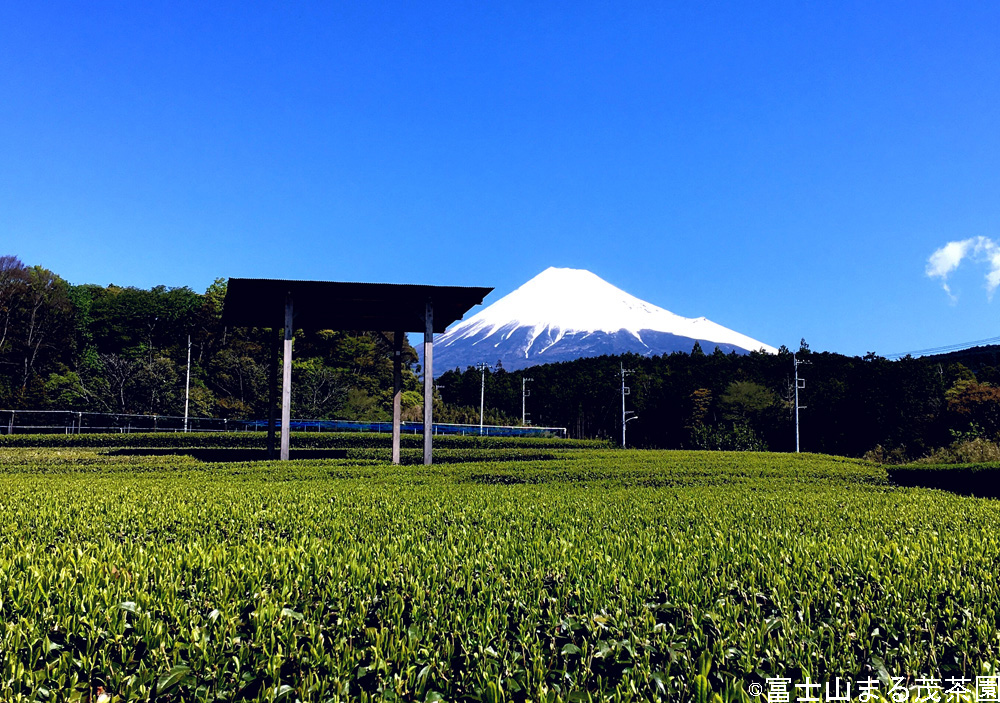
The rental service of these tea spaces, otherwise known as the ‘Neo-Tea Gathering Project’ is managed by central Shizuoka’s own DMO Suruga Destination Marketing Organization.
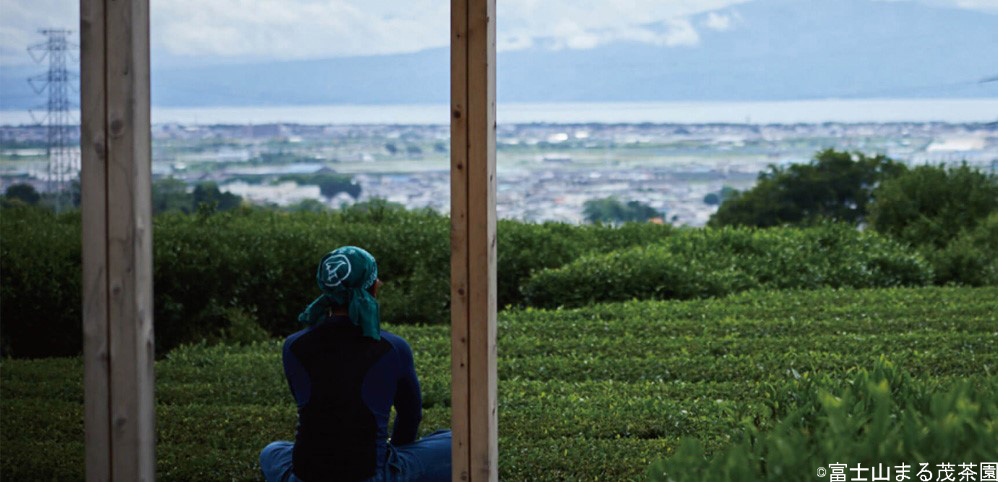
I was able to speak to the owner of ‘Fuji no Chanoma’, also a member of the ‘Neo Tea Gathering Project’ and fifth generation president of Fujisan Marumo Tea Farm, Honda Mohei.
— This is ‘Umi to Fuji no Chanoma’! What a beautiful and refreshing space this is! Even as a Shizuoka resident myself, I didn’t know there were places like this here!
– This ‘Umi to Fuji no Chanoma’ is registered on Google as an art museum under the name of ‘Tea garden with views of Mt. Fuji and the Pacific Ocean.‘ Until recently this garden was used as a space to host tea picking events, but I had the idea to invite others to drink tea here.This has opened up a new wonderful dimension to the farm here. Contemporary artist Yamamoto Shuji and I made the pagoda we have here.
The lumber used in this building is timber harvested from Mt. Fuji in the summer of 2018. It is ‘Fuji Hinoki Cypress.’
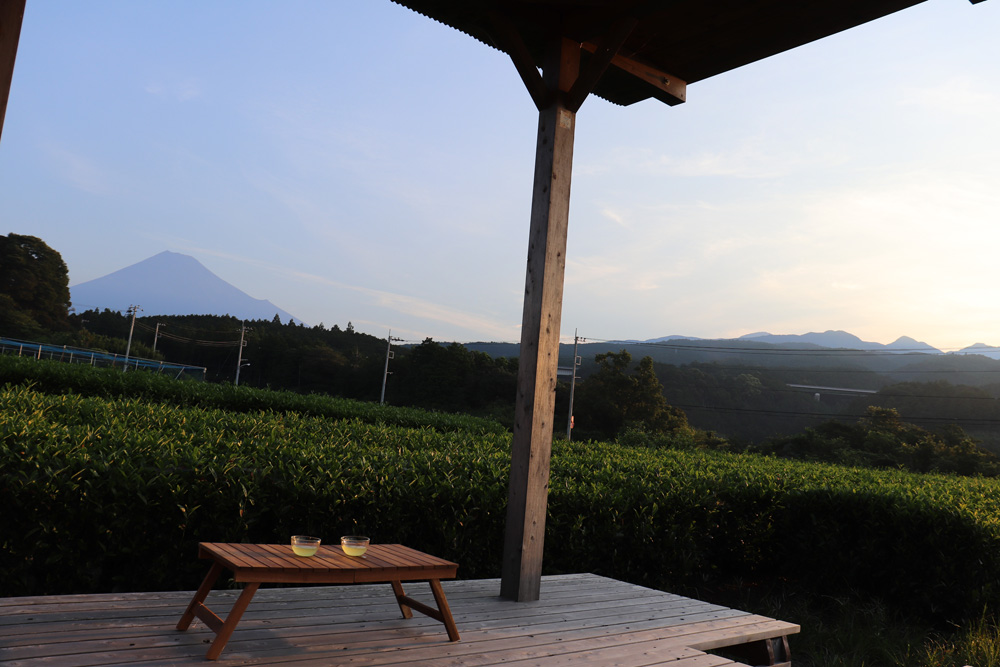
Anyone can rent this space using our company website, or alternatively the ‘Neo Tea Gathering Project’s site.
— I’ve heard that this spot has been visited by many tourists.
We also used this venue when the noted Taiwanese master, Tea Gue came to Japan to learn about Japanese tea.
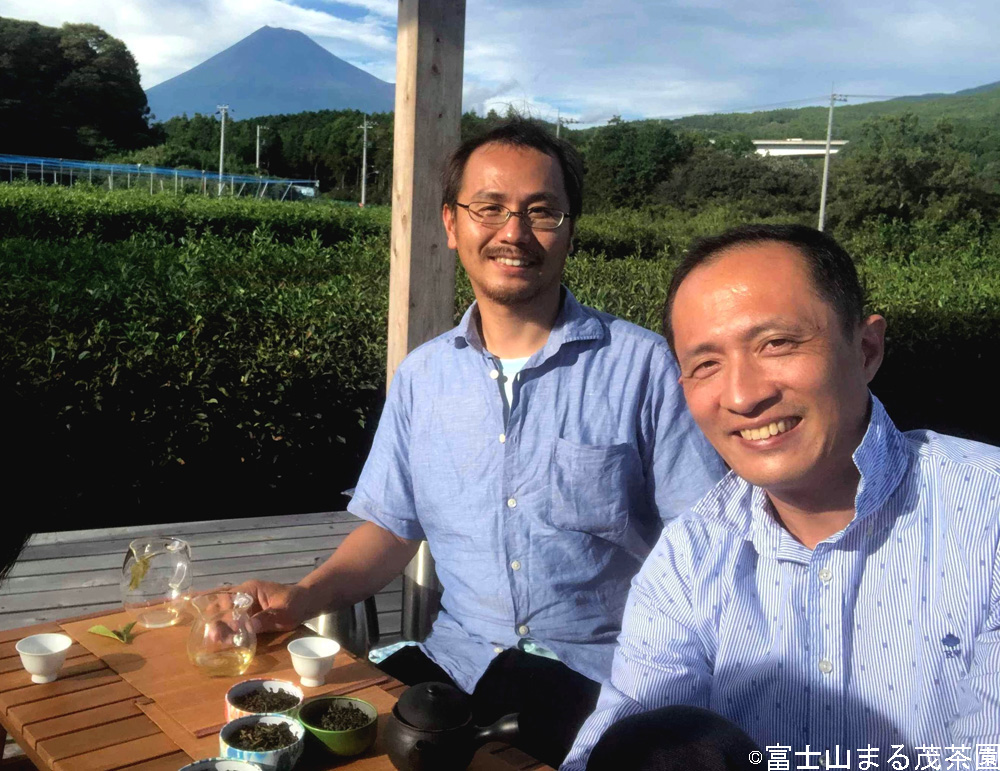 ▲left is Honda Mohei.right is Tea Gue.
▲left is Honda Mohei.right is Tea Gue.
Many people of various nationalities have come here. This is a tip for you, if you point a tourist towards the ocean and tell them, ‘If you go all the way in the direction I pointed and you will arrive in your country!’ they are likely to be impressed!
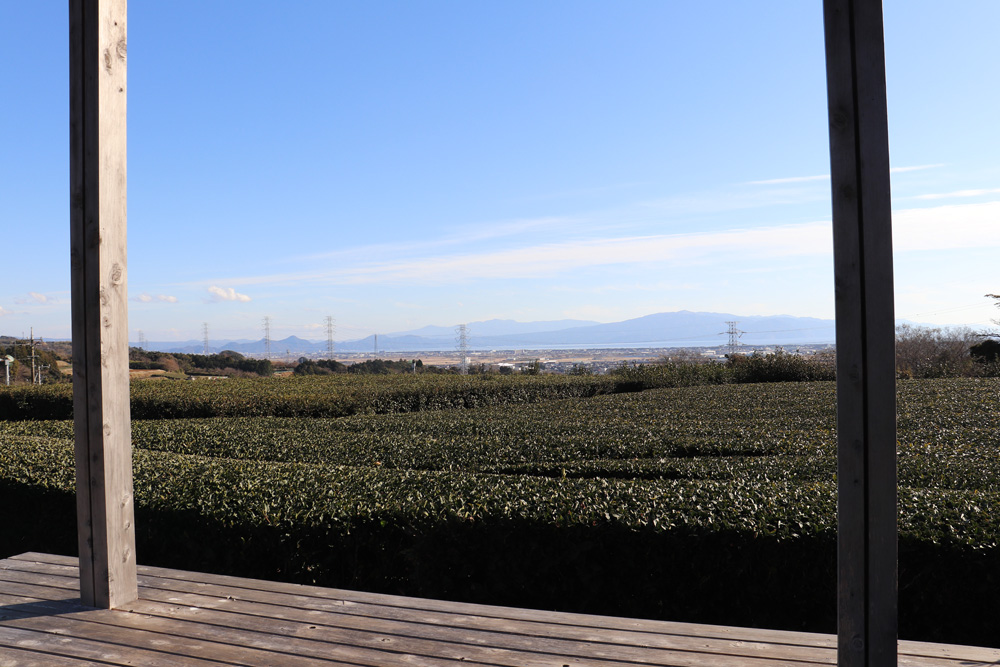
How about the possibilities of this new idea of ‘Tea gardens.
‘ The atmosphere of ‘Umi to Fuji no Chanoma’ is orchestrated by the surrounding tea plantation. It is not just a rental space for people to enjoy but also Mt. Fuji Marumo Tea Farm cultivation and harvest site, where many cultivars of tea are planted.
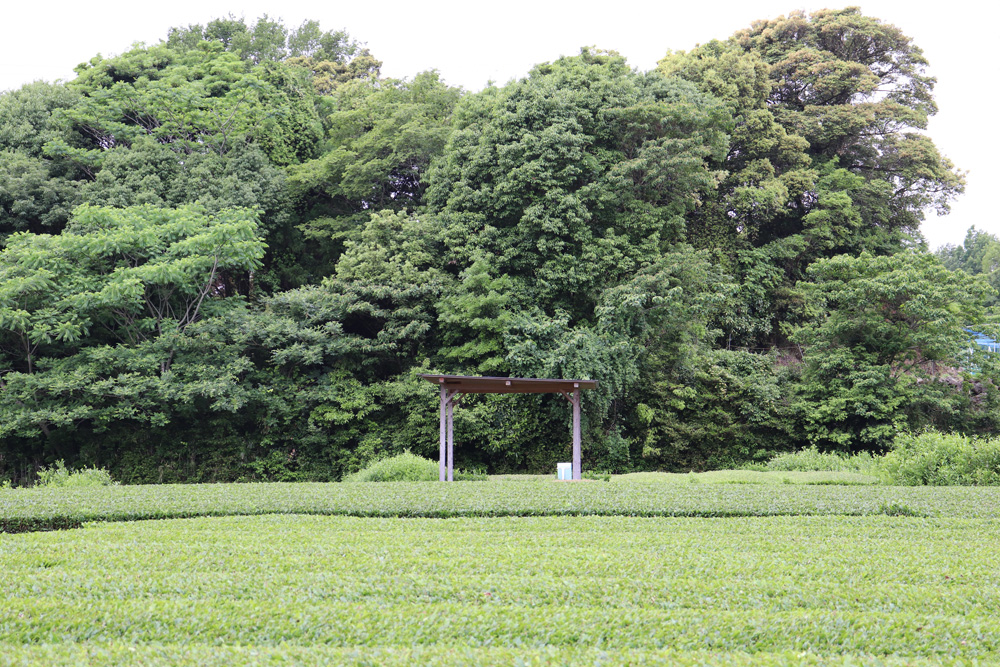
— What cultivars of tea are planted here?
There are many cultivars planted here. One of which is a delicious black tea produced in summer called ‘Sayamakaori.’
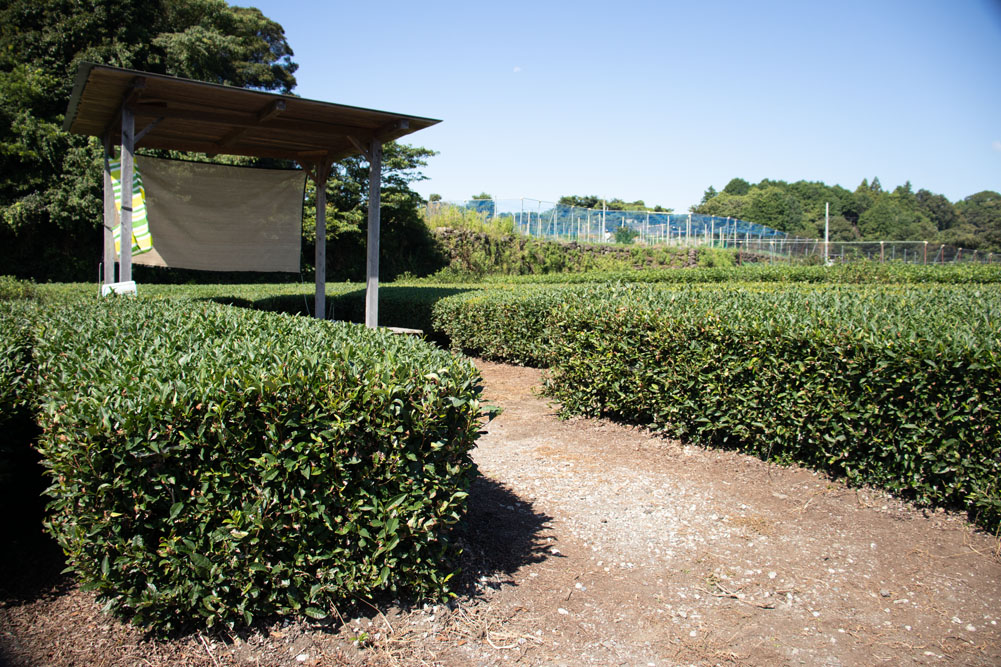
In the back we have Japan’s most popular cultivar, ‘Yabukita.’
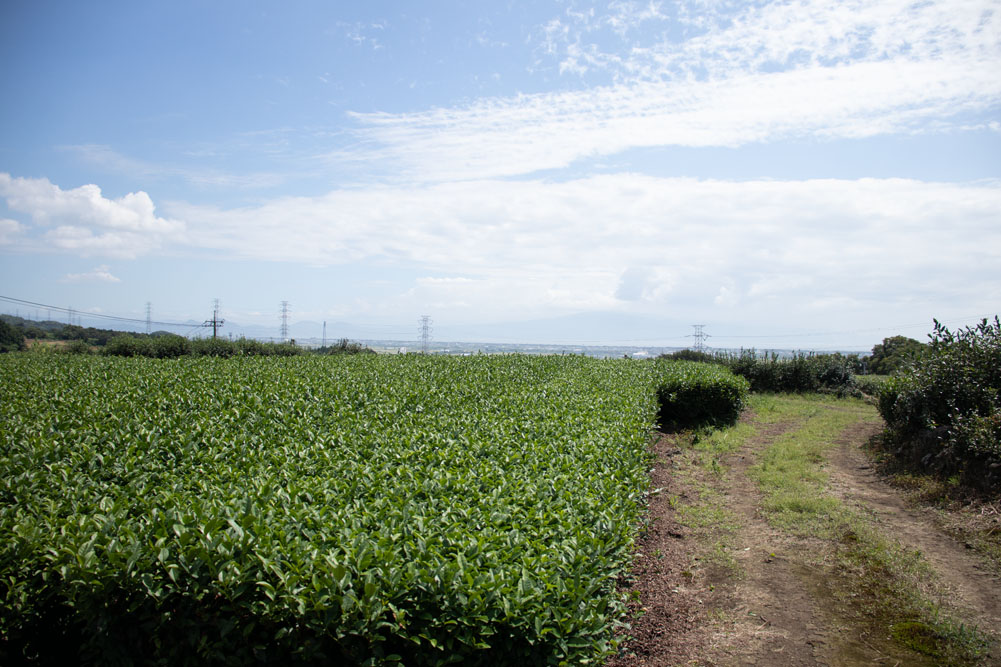
On this terrace here is a cultivar that can be used to make ‘kamairicha’, white tea and oolong tea, ‘Meiryoku’.
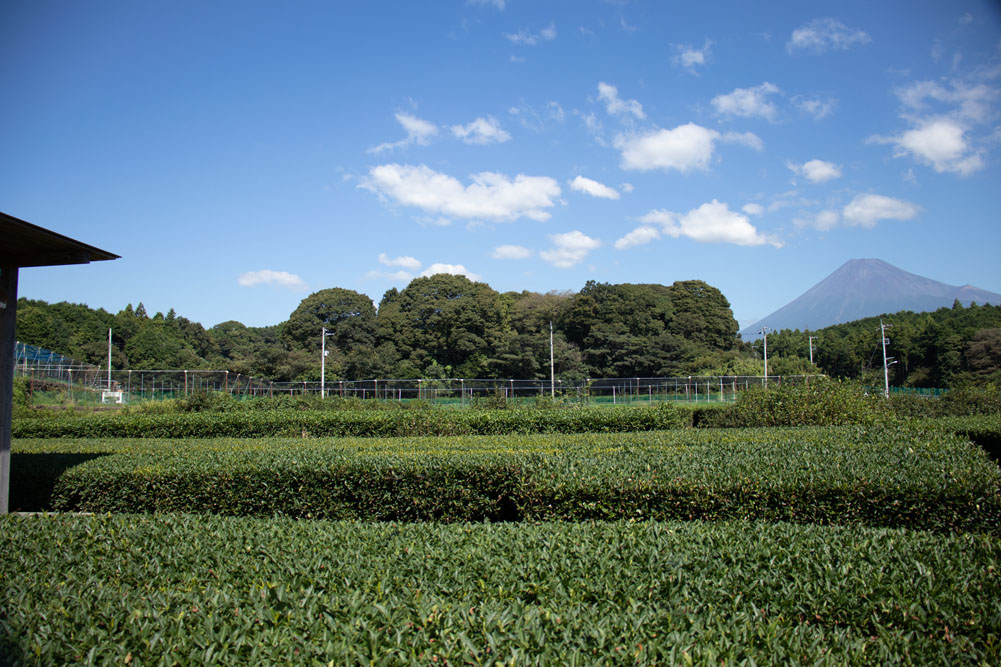
We also have ‘Sakimidori’ which produces a very unique oolong tea. ‘Sakimidori’ was developed in Miyazaki Prefecture.
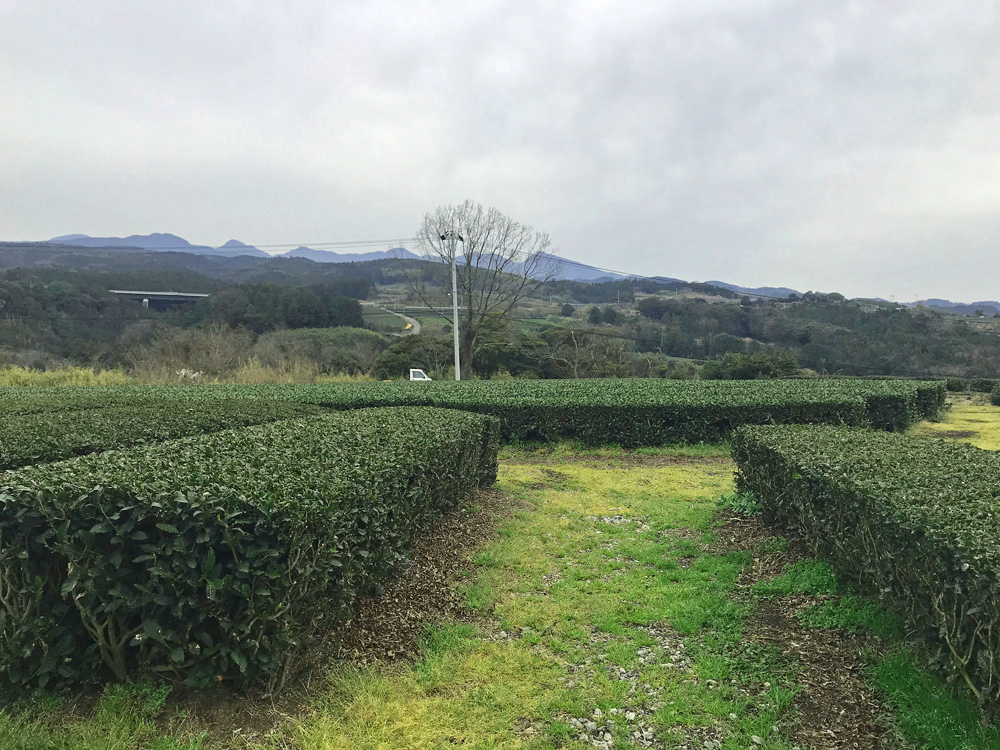
By having various cultivars here, we make sure that one can come here and experience a new tea all year round. In the cold seasons, tea plants accumulate sugar in their leaves to survive the winter causing them to harden.
We can use these to produce ‘Hojicha(Roasted green tea).’ If one reserves in advance we can also provide a ‘temomi’ (hand-rolled tea) and ‘kamairicha’ (pan-fried during early stage of production) experiences.
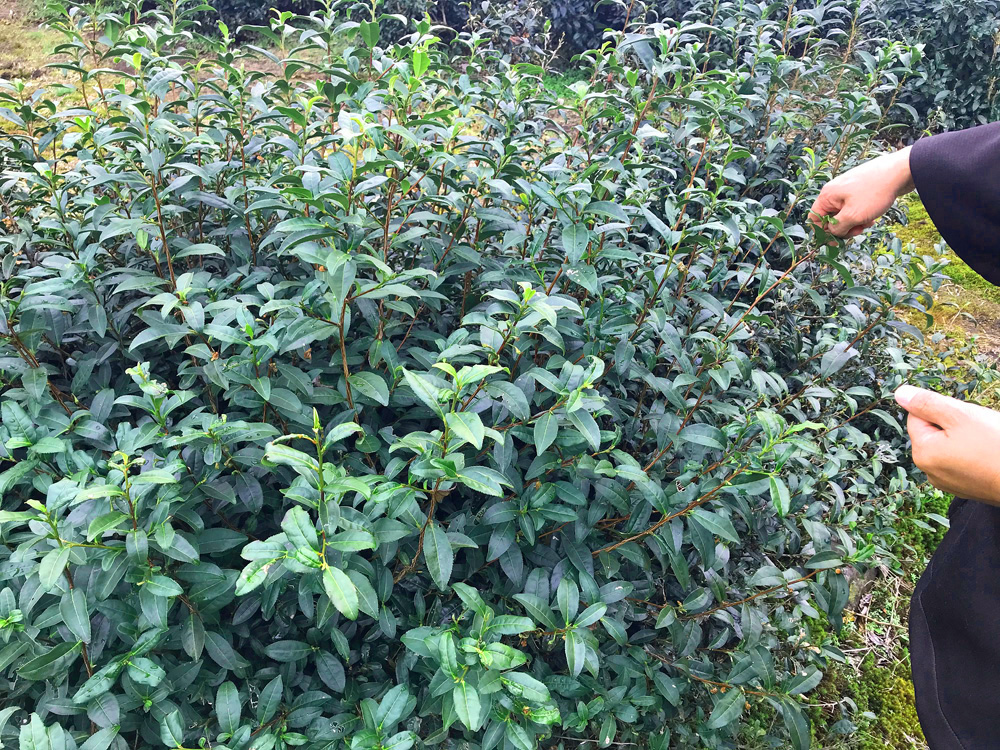
— There seem to be many ways to enjoy the space here at ‘Umi to Fuji no Chanoma.
‘ People don’t just come here to enjoy tea. We’ve had people use this space in a variety of different ways. A tea master held an open-air tea ceremony here and a musician came to play the shakuhachi and koto.
It was a magical scene. In summer and late autumn we have barbecues and hot pot. Eating roast sweet potato and smoked food while enjoying the view of the ocean and Mt. Fuji is amazing! I love to show off my skills pairing tea with the food!
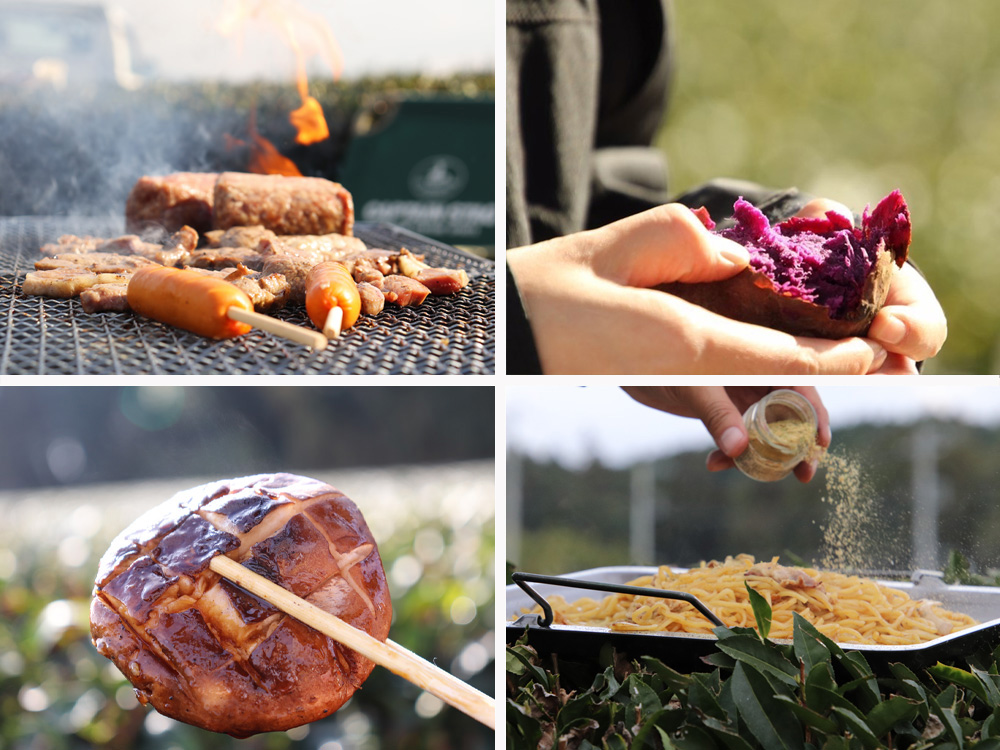
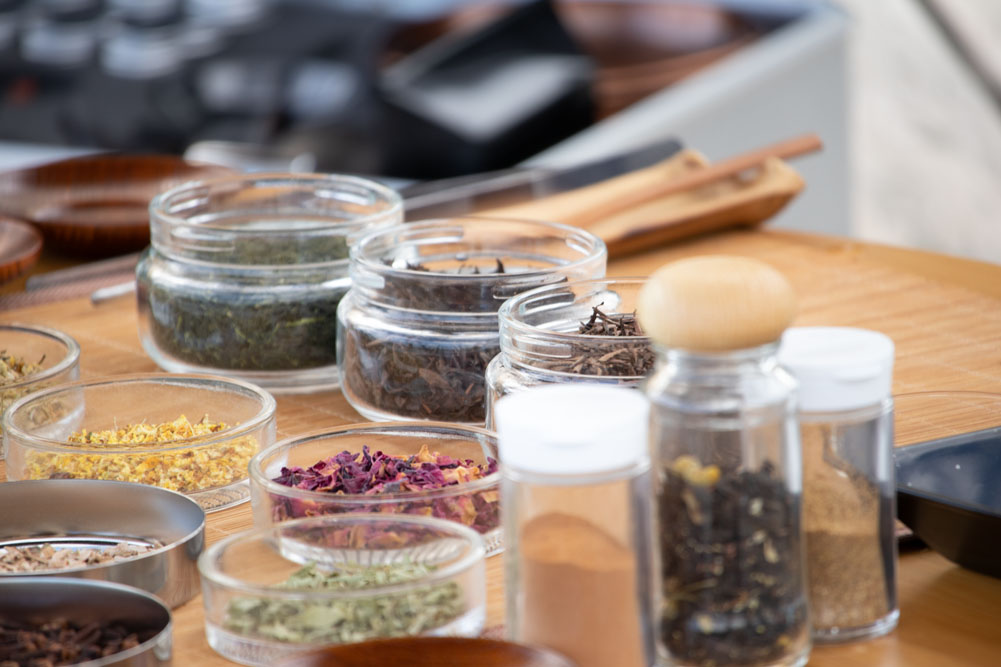
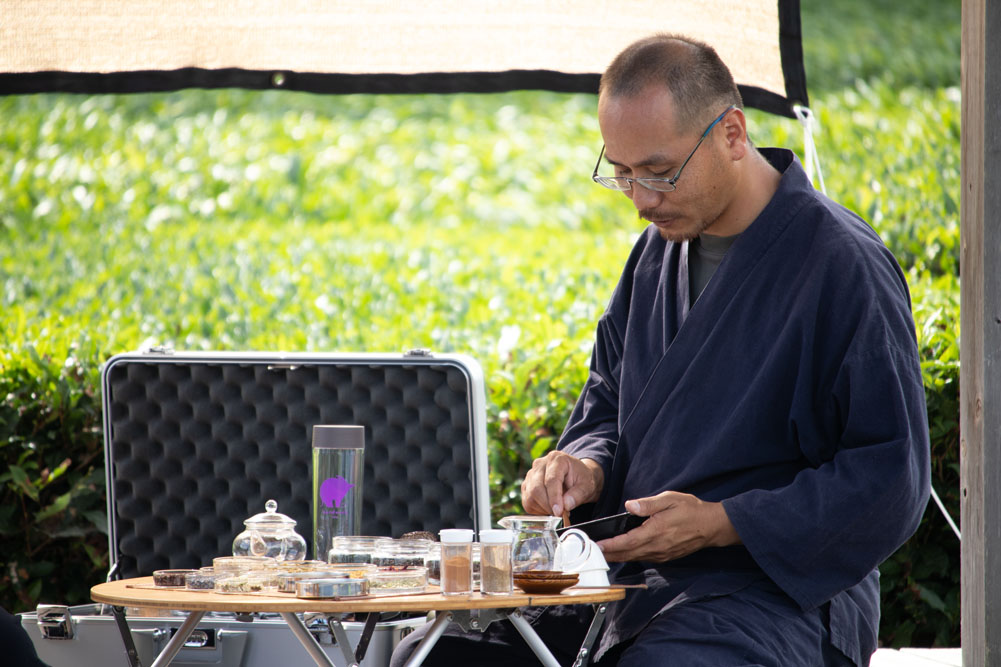
There are also people who come here to do nothing. Often we have tourists who are rushing about from the east to the west and so we provide a time of about 30 minutes to an hour of relaxing, doing nothing.
In fact I want to provide this time for tourists. To enjoy a space here in what is to them a foreign country, where no-one will bother them and they can relax completely. I hope that this will become the concept of a ‘tea garden.’ As long as one can keep an eye on them, young children and pets are welcome here too.
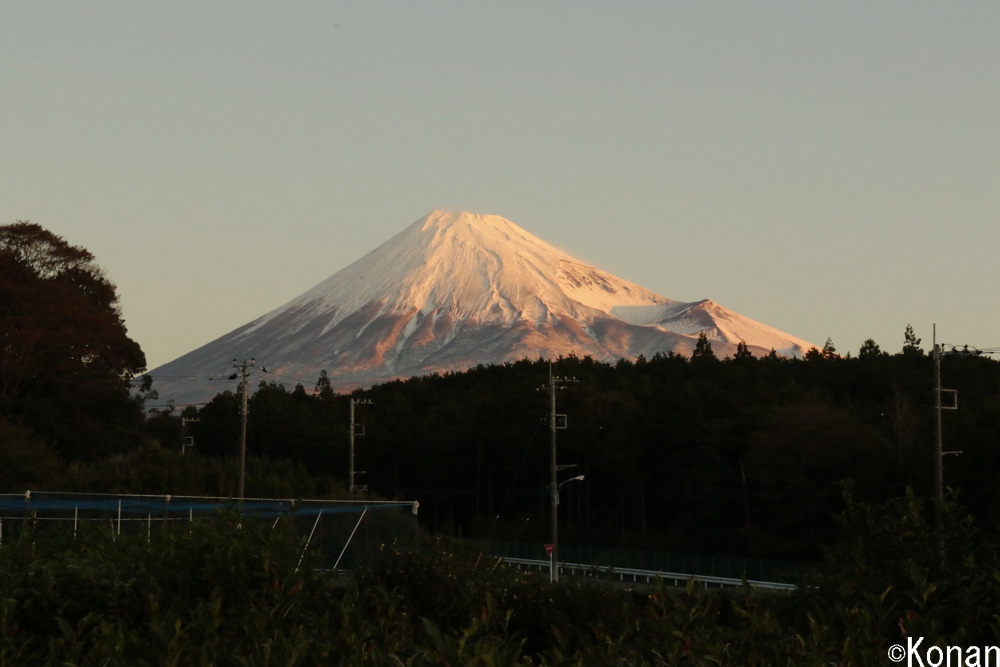 ▲The sunset view of Mt. Fuji from ‘Umi to Fuji no Chanoma’
▲The sunset view of Mt. Fuji from ‘Umi to Fuji no Chanoma’
Where does the flavour of tea come from?
Mr. Honda makes a tea that is known as ‘Fujioncha’ and has a unique taste that is very popular. I had the pleasure of enjoying a cup of tea with Mr. Honda and talking to him about the making of his tea.
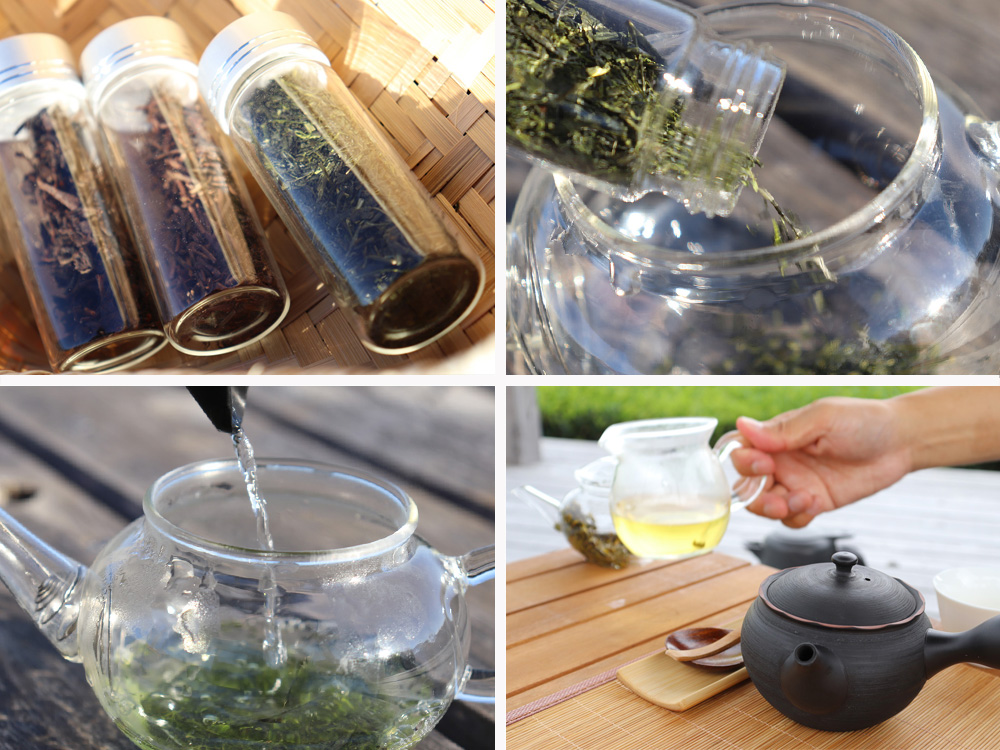
This is my tea.’Fujioncha’ is made in the abundant natural environment at the base of Mt. Fuji. This year we really made a delicious product.
— Wow, how delicious. This tea is somewhat different to the other teas that I have drunk up to now. Behind a very clear sweet taste there is a faint bitterness to it. It has a long lingering, gentle and familiar aftertaste.
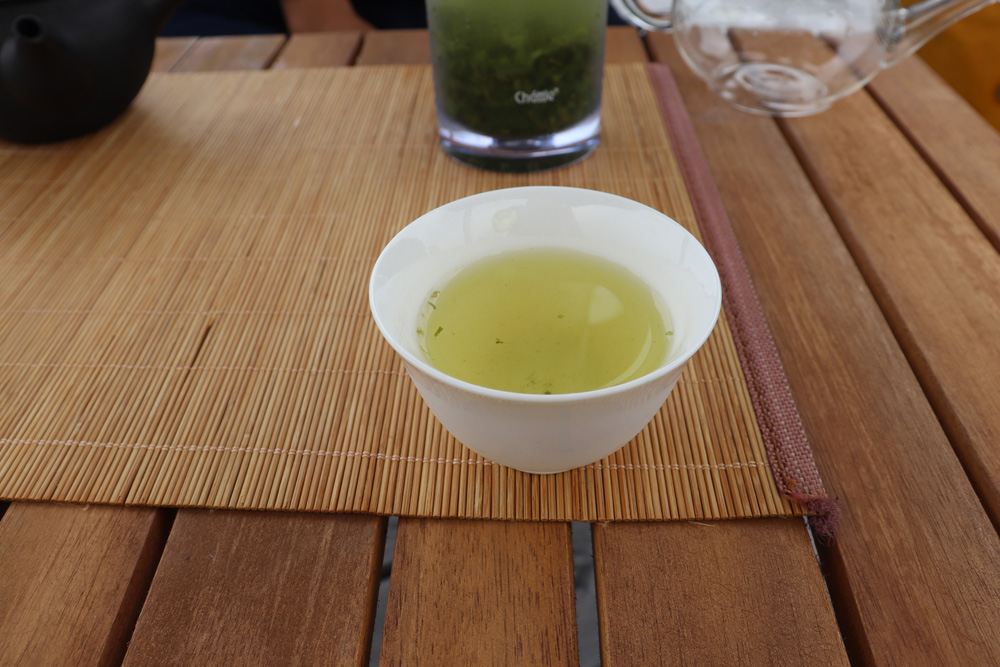
Tea tastes different depending on the region of production.
— Why does tea taste different dependent on the region it was produced?
Camellia sinensis (the tea plant) is not an annual crop like pepper, aubergine or sweetcorn. From planting it takes many years for the plant to produce a harvestable crop. The tea plant is categorized as a tree, along with things like peaches and grapes.
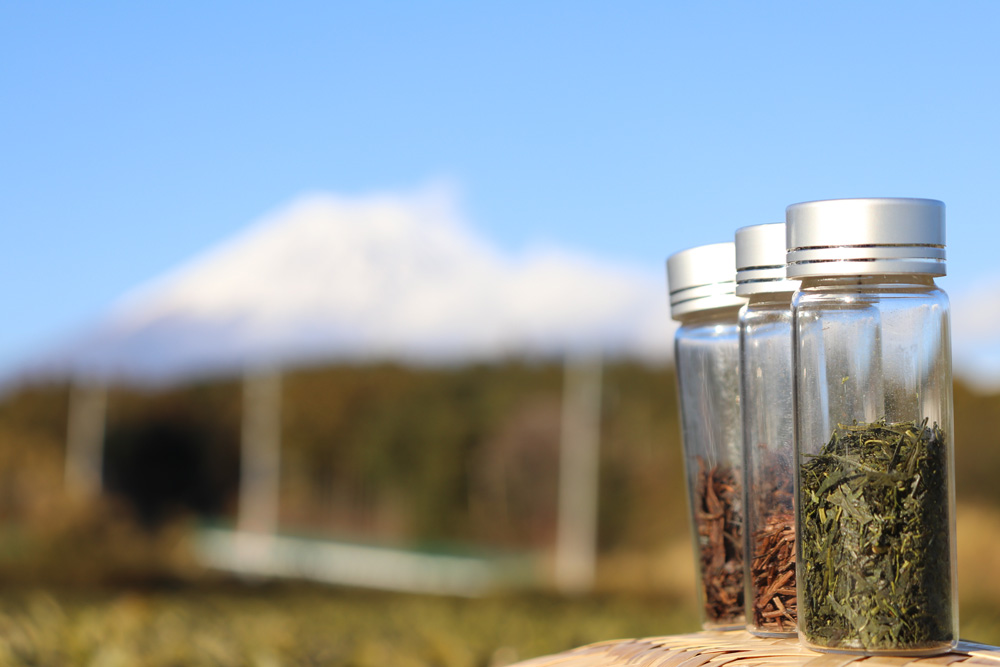
Trees, once grown long enough, extend their roots horizontally throughout the neighbouring soil. The area the roots extend to can be very deep, growing to depths of 50cm and more. The roots suck up various minerals from the underground layers of soil and I believe this is what creates different tastes in different regions.
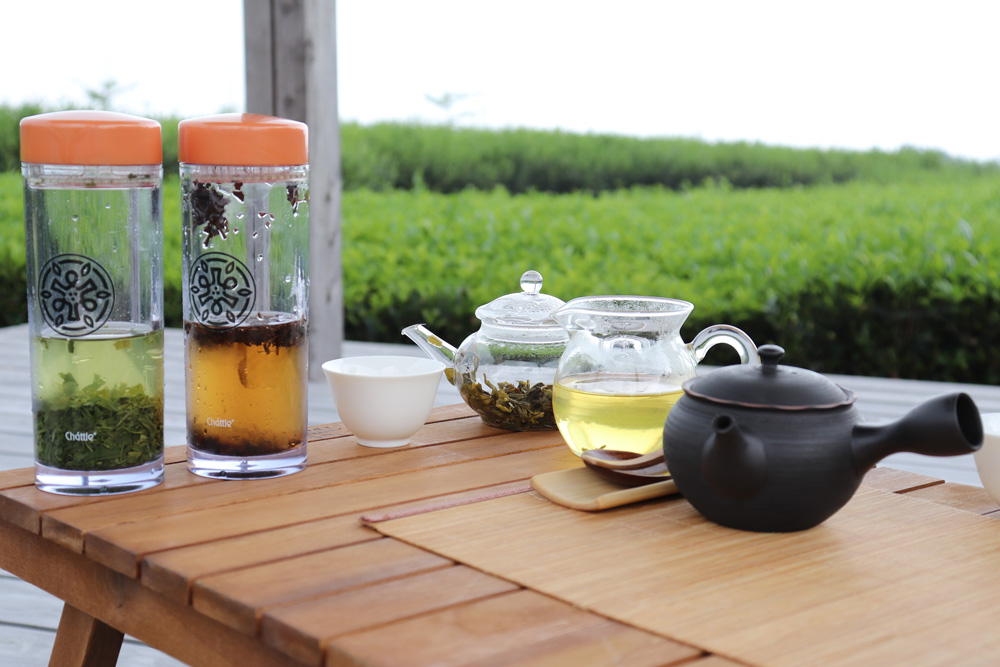
An easy to understand example of this, tea produced on the west side and east side of the Fuji River taste different. This ‘Umi to Fuji Chanoma’ is on the east side of the Fuji River where the soils minerals come from lava bedrock.
On the west side of the river, the soil is mainly ultisol or red clay soil. The different minerals contained in these different soils cause a difference in taste. This is why tea from different regions have unique tastes.
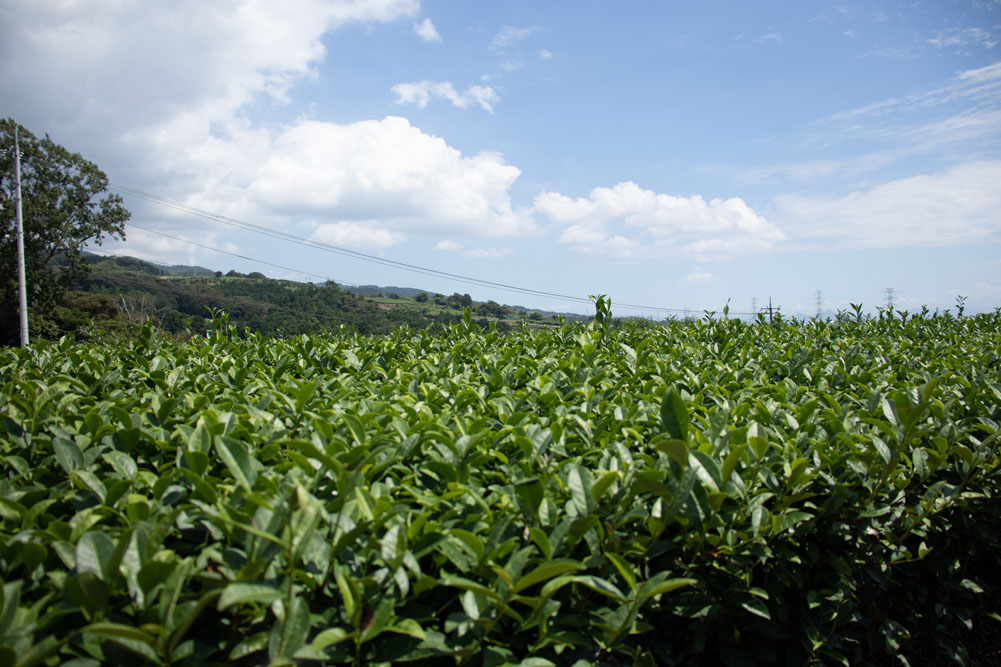 ▲In the foreground is the east side of the Fuji River where fuji no chanoma is located, and the other side is the west side of the Fuji River.
▲In the foreground is the east side of the Fuji River where fuji no chanoma is located, and the other side is the west side of the Fuji River.
— I see. Shizuoka is on top of the Fossa Magna, an area with several soil strata which explains why areas in different parts of Shizuoka create different tasting tea. That makes sense.
The top 50cm of topsoil also have a role in composing the taste. The minerals accumulated in the fertilizer of this top 50cm of soil decide whether the first infusion will have a good umami taste or not. The effect of fertilizer is also effected by the weather.
If there is a lot of rain, of course, the fertilizer will wash out. On the other hand if there is no rain at all, there is not enough water to dissolve the nutrients and be absorbed by the roots.
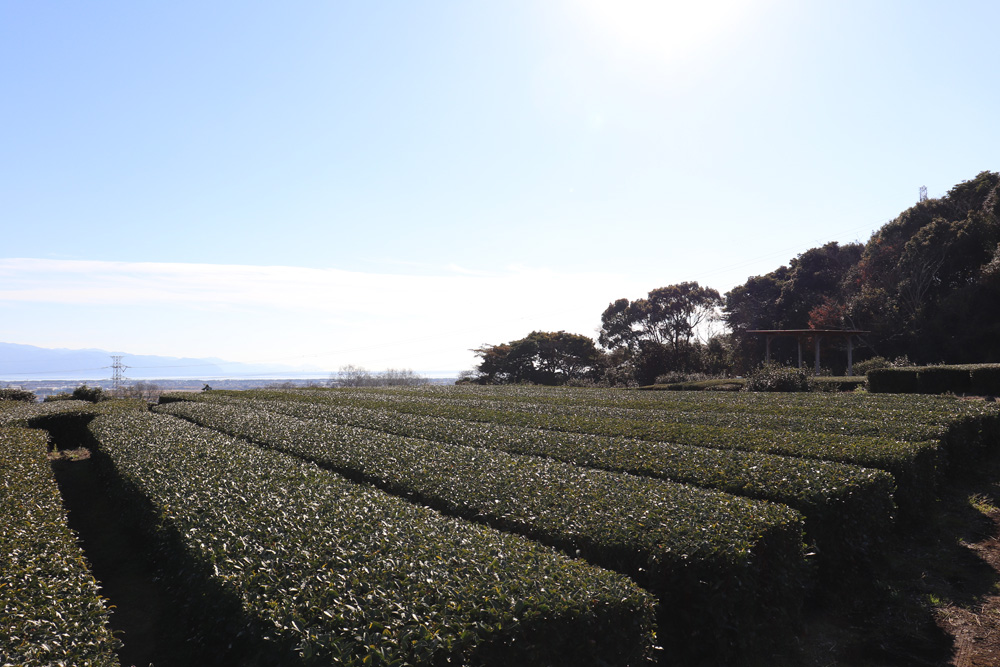
The method of adding fertilizer is also heavily effected by the quality of the soil. Here in Fuji, we have crumbly black topsoil (loam) created by the volcanic ash of Mt. Fuji. Phosphoric acid levels are high here. This means organic materials are slower to be broken down. Adding too much fertilizer has an adverse effect on the crops.
If we were in Kakegawa, of course, we would act differently. The soil in the west of Shizuoka Prefecture, Kakegawa is completely different to the soil here in Fuji in the east.
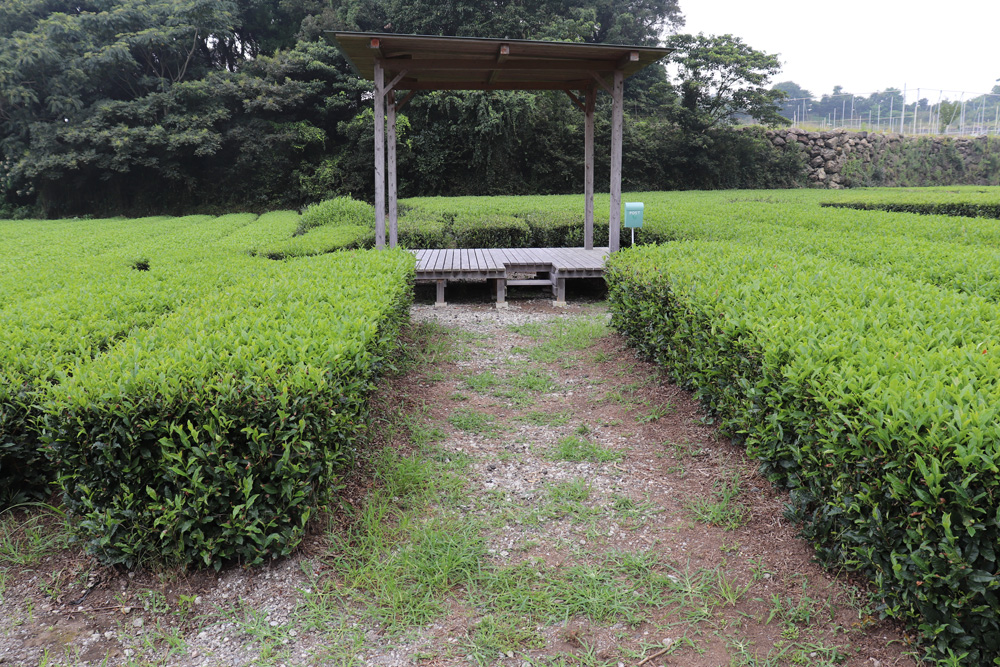
Managers of tea farms must decide on what type of soil to make, adapt to their local environment and based on these actions the character of the tea will come forth. Fertilizer has an influence, which is then further added upon depending on the minerals in the soil strata.
That is why some people may say that they ‘put a lot of fertilizer on this tea which is why it tastes good.’ These kind of simple comments are nonsense.
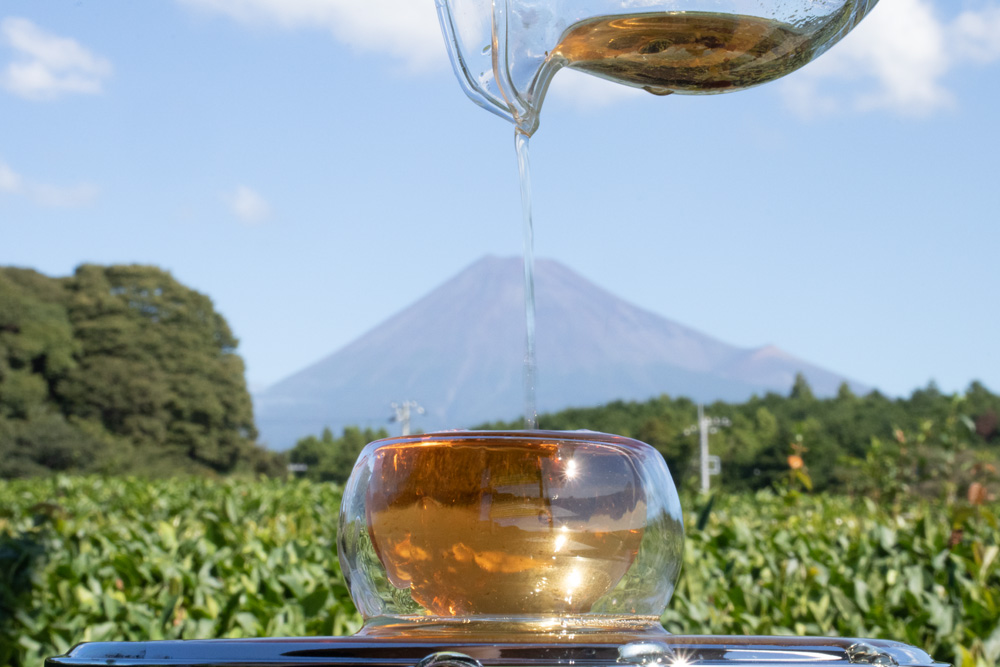
No-one knows the truth but the tea plant itself.
–You are able to explain why a tea tastes a certain way, isn’t that right, Mr. Honda?
Putting the process of tea production into words is at the very least my own take on things. As a tea master, I just want to understand and be able to explain what is delicious, what is pleasant, what is distasteful etcetera.
Tea farmers all over the country make tea according to the rules that have been passed down to them, and that is most likely the method most fitting to their respective environments. I can accept that. I don’t have the desire to claim to know what is right and what is wrong. I think that it’s a great thing for people to be moved by the emotional aspect of tea, and I encourage it.
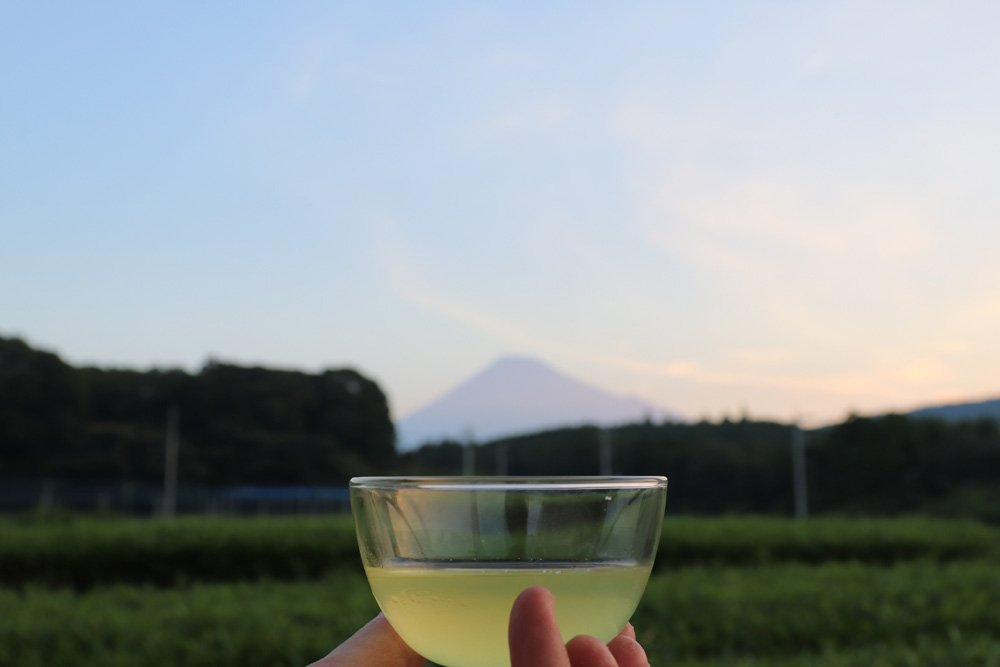
Tea is an agricultural product which means that it goes through many processes by both nature and human hands, making an investigation into the reason for the result very difficult.
For example investigating into how a tea got a certain flavour, one could not specify whether it was caused by the region, method of cultivation or production. The difference in my case is that I have the skills to recreate these different factors.
At the end of the day when I have the opportunity to discuss tea, I usually find it best to take the stance that ‘the truth is known by no-one and most of the secrets are held within the tea plants.’
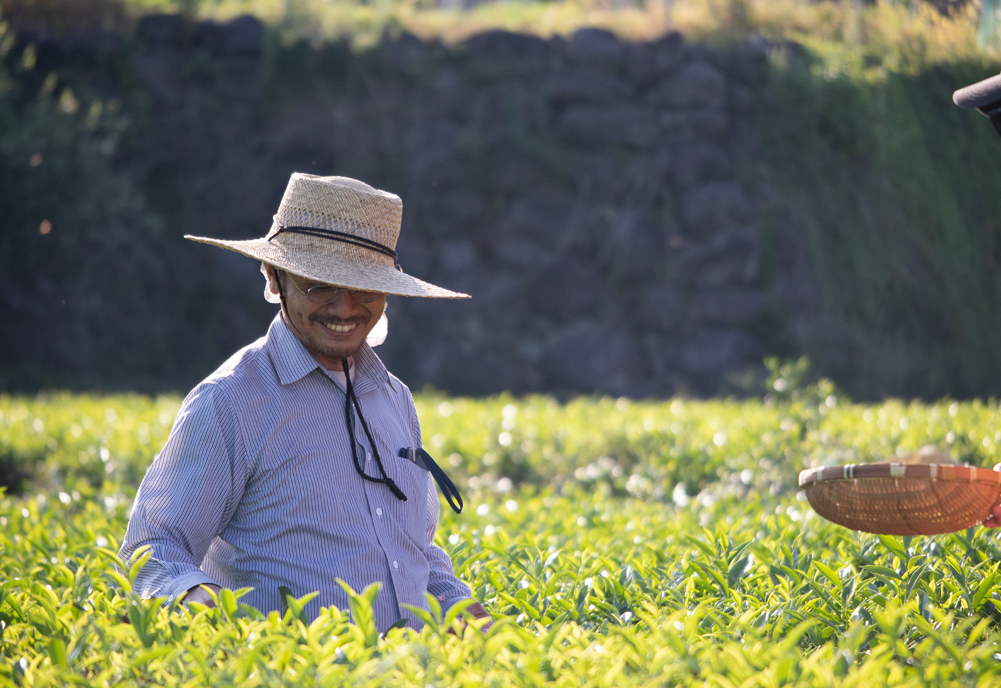

Related articles :Fuji Marumo Tea Garden Entrusts a Joyful Style of Tea to the Future【Fujioncha,Shizuoka Prefecture】
Related articles : Taste the Terroir of the tea-producing region Makinohara at Daichi no Chanoma【Makinohara City, Shizuoka Prefecture】
Recommended Articles : Top 5 Recommended Natural Japanese Tea Cafes! Enjoy the Perfect Tea Date for Couples【Shizuoka Prefecture】
~UMI TO FUJI NO CHANOMA・How to Purchase・Booking the Tea Experiences~
| Address | 1765, Fujioka, Fuji City, Shizuoka Prefecture, 417-0841, Japan |
| Website
How to purchase Booking the Tea Experiences |
(The link for booking a tea experience at the “Tea Garden with the Ocean and Mt. Fuji View”.) |
| https://www.instagram.com/honda_mohei/ | |
| Phone number | +81 545 30 8825 |
| E-money and credit cards: Available QR code payment |
Available
QR code payment is not available. |
| Open | Contact Chajihen |
| Closed | Contact Chajihen |
| Parking lot | Available for a few cars |
| Access | By car – 15-minute drive from Shin-Fuji Station – 15-minute drive from Yoshiwara Station – Exit from the Fuji-higashi IC of National Route 1, drive to the north on Prefectural Road 76. Go straight at the intersection with Prefectural Road 22, turn right just before the slope, cross the bridge over the Akabuchi River. Turn right after crossing the bridge, then turn left and continue 200m. |
| Writer | Norikazu Iwamoto |
| Career | Ochatimes chief editer. Meeting with Vice Governor of Shizuoka prefecture. Judge of Shizuoka 100 tea’s award in 2021~23. Ocha Times link introduced at website of World O-CHA(Tea) Festival 2022, Tea Science Center, The City of Green Tea Shizuoka, Ministry of Agriculture, Forestry and Fisheries. |
| English translator | Calfo Joshua |
| Career | Born and raised in England, living in Japan since 2016. Studying arboriculture in Shizuoka Prefecture whilst operating his landscape business Calfo Forestry. Appreciating the nature of Japan and the culture that places such importance in it. |


 Go to Japanese page
Go to Japanese page
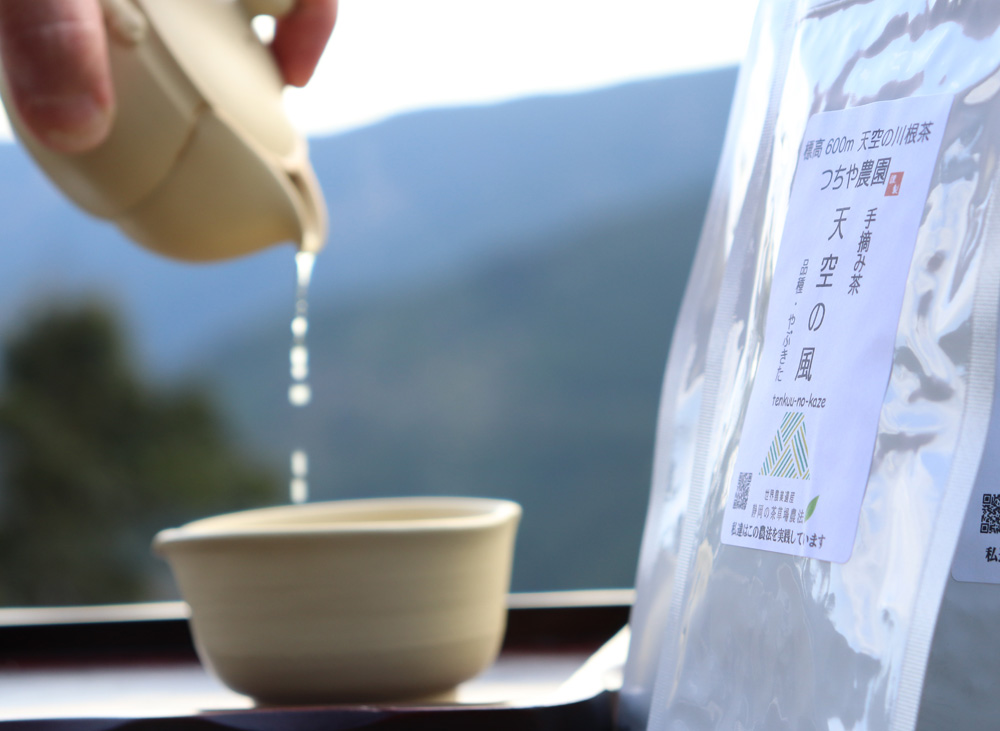
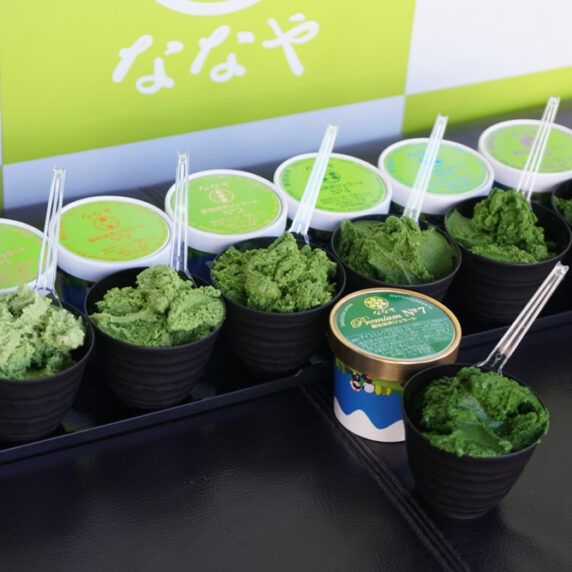
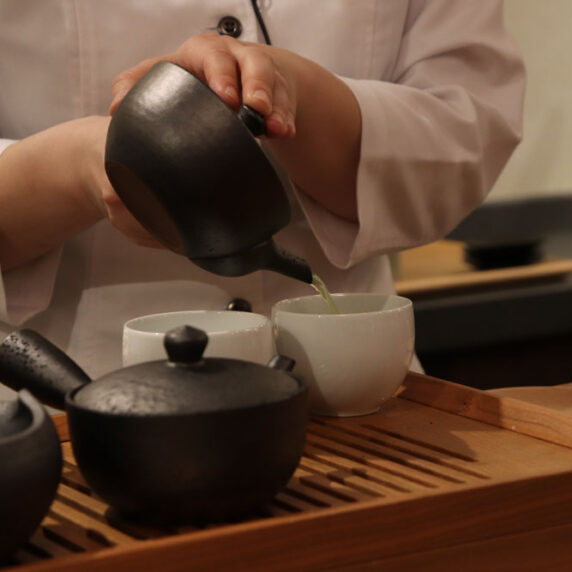
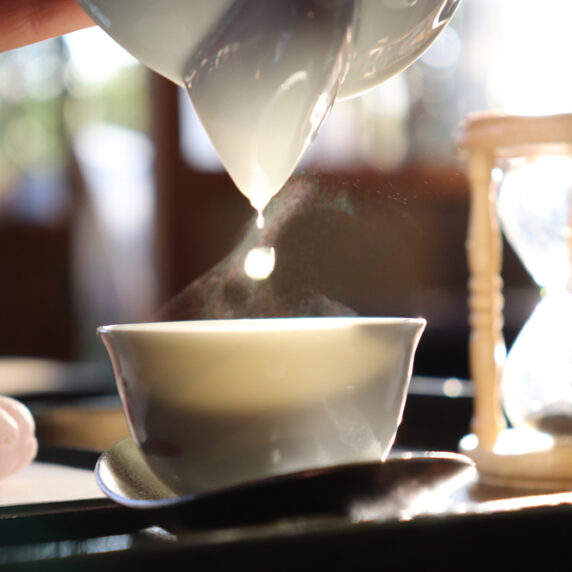
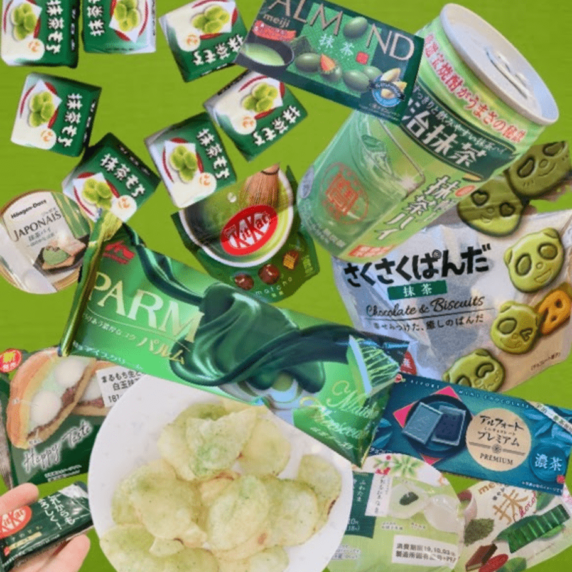
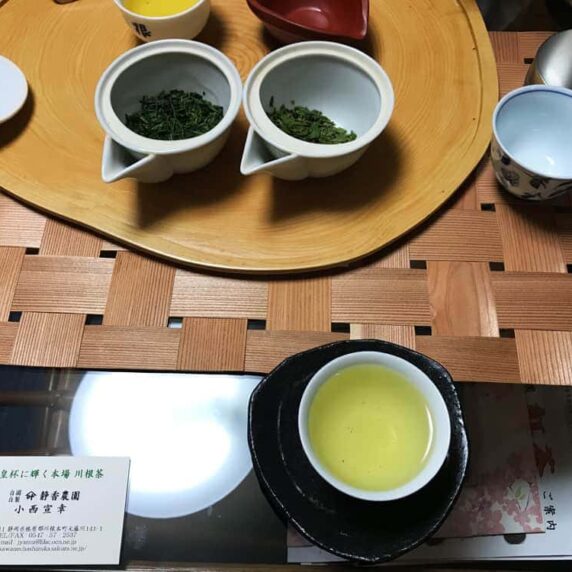




 on the red bar to close the slide.
on the red bar to close the slide. to see the distance between the current location to the Chaya.
to see the distance between the current location to the Chaya.